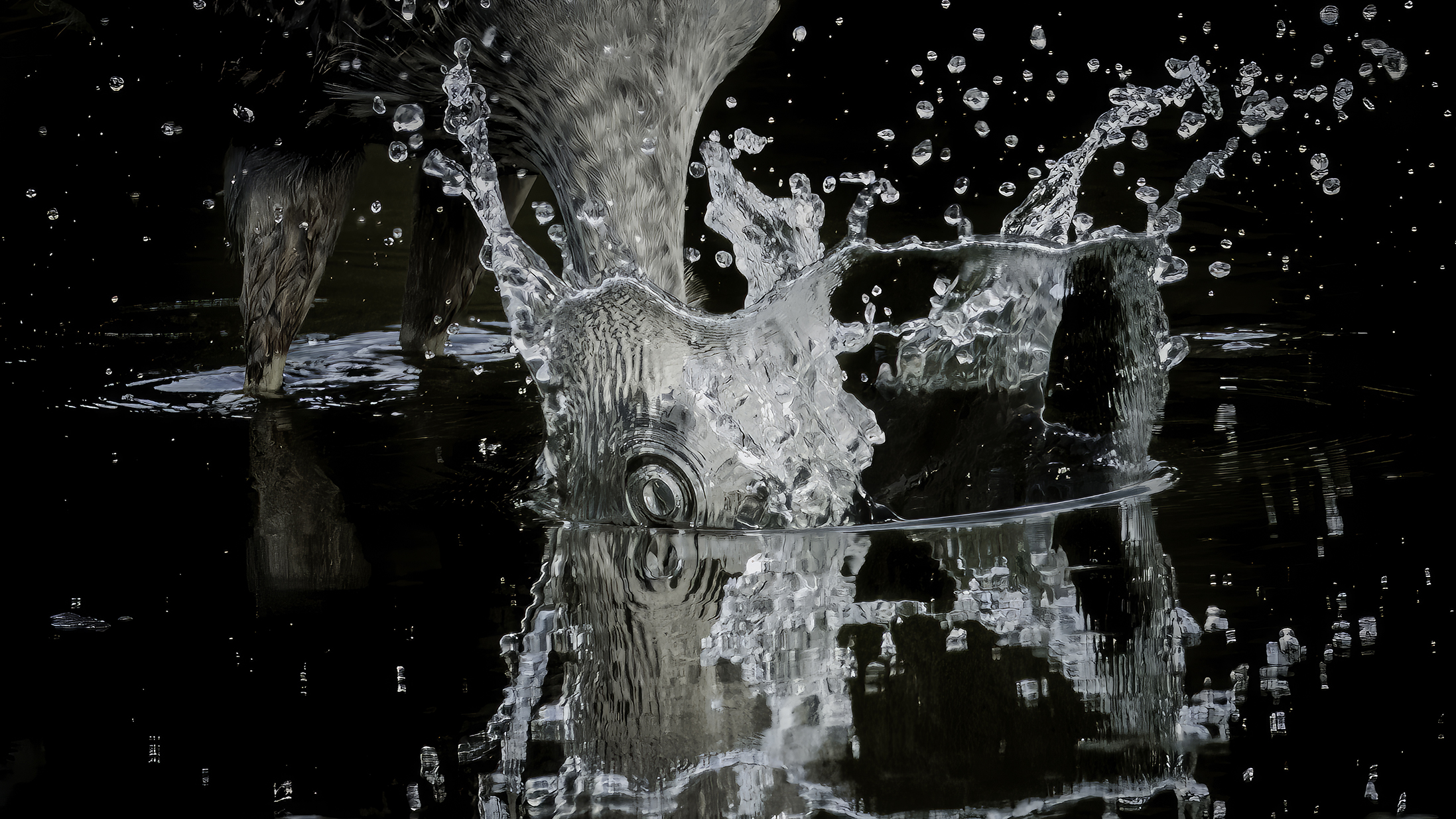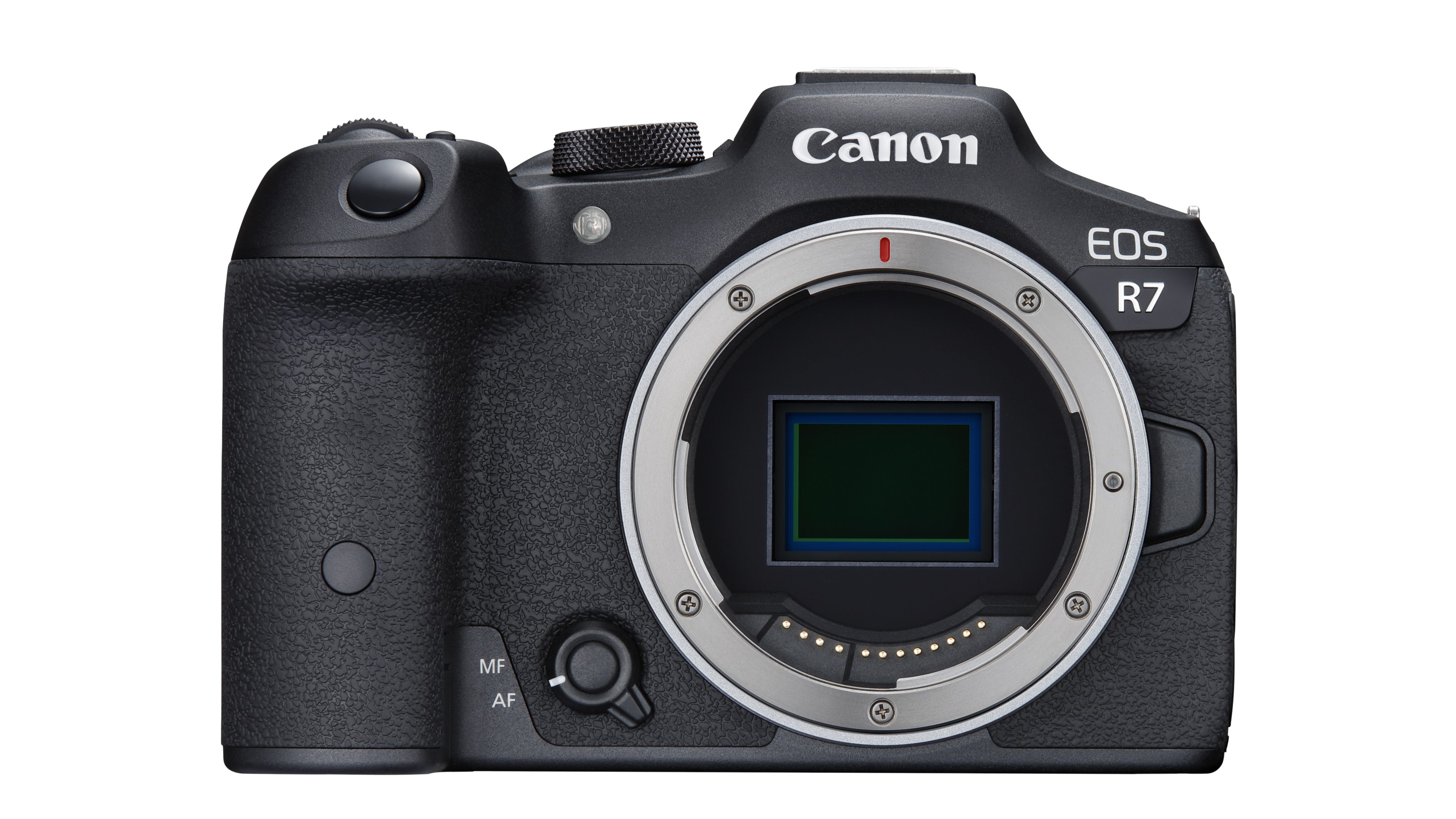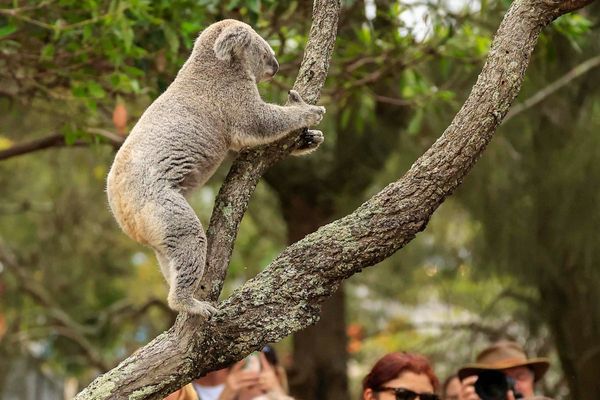
Shaun Antle, recognized as 'Oh Me Nerves Photography', is a Canadian wildlife photographer. But unlike some wildlife shooters who exclusively work with full-frame cameras, Shaun shoots with an APS-C sensor.
His work has won many awards, and his image Splashdown earned an honorable mention in Canadian Geographic's Canadian Photos of the Year 2023 competition.
Shaun captured this image with a Canon EOS R7, using the Canon RF 100-500mm f/4.5-7.1L IS USM, shooting at 1/200 sec, f/8 and ISO1600. This camera features a 32.5MP APS-C sensor, and the fact that this image was not taken on a full-frame camera might surprise people.

It’s funny how the debate about full-frame vs APS-C for wildlife photography just keeps going, and will probably never end. But the R7 really shines when it comes to taking wildlife pics, thanks to its impressive high-res output, crop factor (which extends the effective focal length) and speed.
It can shoot up to 30fps with the electronic shutter and 15fps mechanically, and let's not forget that it boasts super-fast autofocus with Dual Pixel CMOS AF II's subject tracking modes and 5,915 AF positions for photos.
On the visual side, Shaun's images create powerful connections that advocate for biodiversity and the protection of natural habitats. I spoke to Shaun about his award-winning image and discussed four critical factors that contributed to his triumph…
1. Natural behavior
When capturing wildlife, you should always respect your subjects and give them plenty of space. This ensures safety for both you and the animal, and also enables you to capture more natural behavior.
"I frequently capture the Great Blue Heron, due to its common presence in our region," says Shaun. “They are quite comfortable around humans, so I find it a valuable chance to refine my skills while respecting their space." Shaun believes that capturing an animal’s natural behavior is important.
2. Low perspective
Shaun aims to show wildlife from a new and distinctive perspective, while also raising awareness of conservation issues. "Shooting from a low perspective, such as the animal’s eye level, is fundamental. This approach enables viewers to connect with the subject, creating a more intimate portrayal.
"In today’s world, where environmental challenges are increasingly urgent, conservation photography that connects with the viewer inspires stewardship and drives positive change for our planet’s future."
3. Mirrored elements
Reflections create mirrored elements that add an extra layer of depth and complexity and create dynamic compositions. "During my shoots, I actively seek reflections. In this instance, the conditions were ideal – calm water, warm air and minimal wind – and the reflection you see is straight out of the camera; no filters were applied."
In post-production, Shaun cropped the image and made clarity adjustments to emphasize the bird’s eye within the water splash. "My goal was to maintain authenticity by adding or removing as few elements as possible, ensuring that the image stayed true to its original capture while also enhancing its focal point."
4. Sharp details
Freezing rapid motion, such as the bird diving into the river, requires a keen eye for detail and a mastery of the exposure settings. "I typically aim for the sweet spot between f/8 and f/10 and, depending on the available light, I adjust the ISO accordingly. With these settings and some adjustments to the shadows and highlights in post-processing, I was able to capture the scene as I’d hoped."
For this dynamic close-up shot, Shaun used the R7’s animal tracking feature. "I’ve honed my skills in approaching wildlife discreetly and anticipating the decisive moment. And as soon as the Great Blue Heron signaled its intent to strike, I was ready."
Others in the Why Shots Work series
- Urban street photographer reveals his candid capture secrets
- Photographer tells story of getting up close and personal with a python
- Discover four key elements that make this stunning photo a success
- The 4 photographic decisions that take this motorsport shot to the next level
- Photographer tells story of his amazing shot of wallabies fighting on the beach







